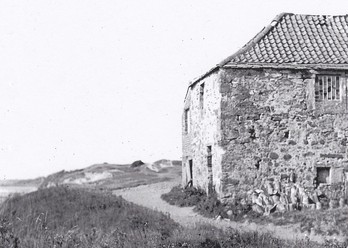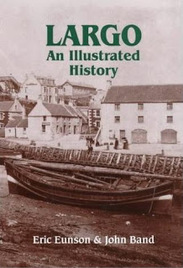

 The top image shows the panhouse of the former Drummochy Saltworks around the 1950s (when it was being used as a joiner's workshop). It is the darker building to the left of the gable end of Drum Park. The smaller image shows the same building from the other side - probably taken not long before its 1967 demolition. The salt works here began in the early 1740s, by which time there were many long-standing, larger saltworks along the Forth coast. Salt, of course, was a valued commodity for preserving food prior to refrigeration and also had many other uses. Sea water was collected in large iron pans and heated by fires beneath them. As the water evaporated, salt crystals were left behind.  The fascinating book, 'Largo - An Illustrated History' by Eric Eunson and John Band contains a chapter on 'Coal and Salt in the Eighteenth Century' which provides much more detail on the salt panning activities at both Drummochy and Viewforth (beyond The Temple). It also includes a super photograph of the panhouse around 1900 with a group of joiners posing outside it, tools in hand. The book notes that the Drummochy saltworks closed permanently in 1787. The panhouse, however, continued to provide a venue for various other activities for another 180 years! Today a private house sits in the site. More to come on the saltworks tomorrow...
0 Comments
Your comment will be posted after it is approved.
Leave a Reply. |
AboutThis blog is about the history of the villages of Lundin Links, Lower Largo and Upper Largo in Fife, Scotland. Comments and contributions from readers are very welcome!
SearchThere is no in-built search facility on this site. To search for content, go to Google and type your search words followed by "lundin weebly". Categories
All
Archives
July 2024
|